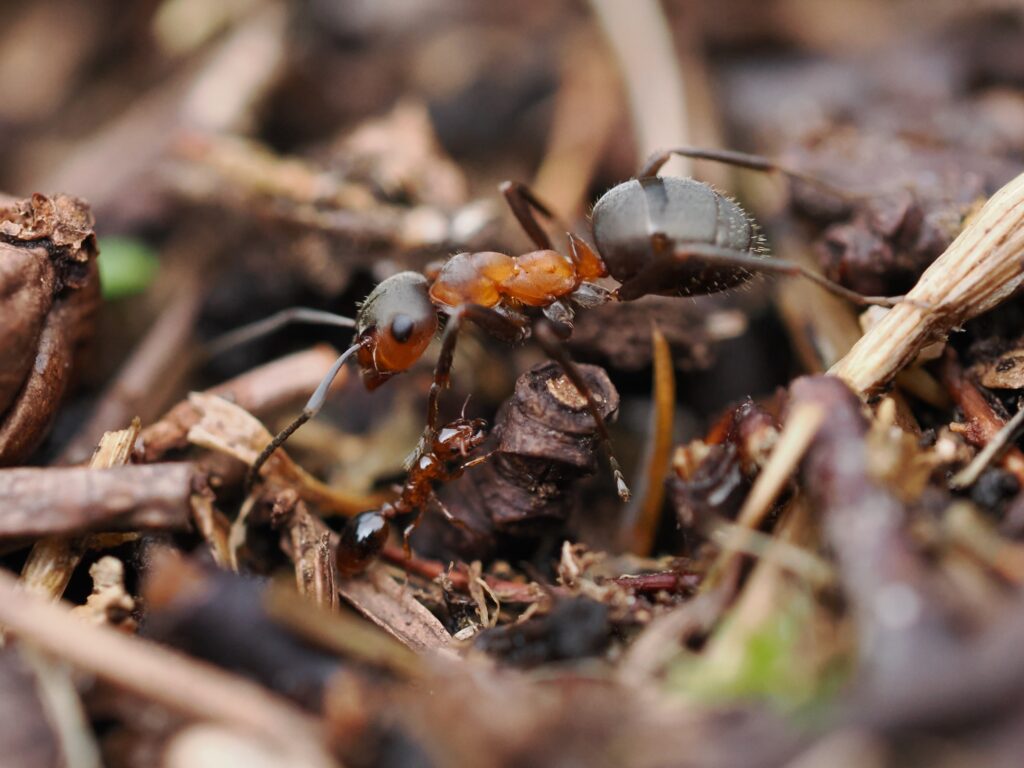A SCOTS city has discovered to be hosting a rare and very elusive ant that has thrived in the city for the first time in decades.
The shining guest ant, known for being a “cuckoo” of the ant world, because it only lives in the nests of other ants, was last seen in Deeside back in 1952.
The rediscovery of the ant was made by wildlife tour operators Dan and Rachael Brown of Wild Discovery, at Crathie, near Balmoral Castle.

Their find has been confirmed by experts at The James Hutton Institute in Aberdeen, who said the number of ants seen has been exceptional and far higher than anywhere else in Scotland.
Dr Jenni Stockan, a research scientist specialising in insect ecology at the Hutton said: “This is a notable find. The shining guest ant only lives in the nests of wood ants and the only other places it is found in Scotland are Speyside and Loch Lomond.
“It’s also very elusive. We only know it is there when individuals, usually males, are seen on the surface of the nests in late summer or early autumn.
“They only live in the nests of wood ants, which is why they are known for being a cuckoo of the ant world.
“Shining guest ants are globally threatened so to have found another population in Scotland, and a thriving one, is great news.
“The fact that they are present also indicates healthy wood ant populations.
“But we should also be mindful that the wood ants – and wood ant nest mounts Shining Guest Ants rely on to live in – need to be protected as an important part of the ecosystem.”
The ant was last recorded in Deeside in 1952, on the Invercauld estate, by entomologist Cedric Collingwood.
Previous surveys for the shining guest ant on Deeside failed to find it, including extensive searches on the Invercauld estate, as part of the Rare Invertebrates in the Cairngorms project (led by RSPB).
Dan Brown, of Wild Discovery, said, “We were incredibly excited to discover the tiny, glistening bodies of shining guest ants amongst a heaving colony of wood ants.
“We have searched hundreds of wood ant mounds over the past few summers in Royal Deeside and this discovery came out of nowhere and just a few hundred meters from our house.
“Further searching revealed another four wood ant nests containing their tiny house mates, so who knows what other exciting discoveries await in the glen.”
It had been thought that the genetic diversity of the shining guest ant was quite low, because, while most queen ants are winged, the males are wingless, so can’t move far, and wood ant populations are fragmented in Scotland.
But research in 2021, by scientists at the Hutton, the University of York and Forest Research, has shown that the ant’s genetic diversity was in fact quite diverse.
Dr Elva Robinson, behavioural ecologist at University of York said: “We believe this shows the ant must be able to successfully disperse within sites and may be able to colonise new patches of habitat if they become available nearby.”
Dr Stockan added: “We also speculated that the high genetic diversity of this ant might mean it is more abundant in Scotland than previously thought.”
The research, funded by Future Woodlands Scotland, generated the first data on population genetics of the Shining Guest Ant and how isolated populations are, indicating their vulnerability.
“Our research also showed that wood ant nests can contain more than one colony of Shining Guest Ant, making the mounds of high conservation importance,” adds Dr Robinson.

